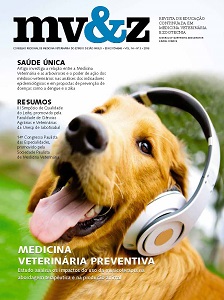Critical evaluation of two methods for determining the quality of hake Macrodon ancylodon (BLOCH & SCHNEIDER, 1801). Quantitative Descriptive Analysis and Acceptability Test
Main Article Content
Abstract
Seafood is the generic term that includes fish, crustaceans,
mollusks, amphibians, aquatic reptiles, aquatic mammals used as
food for human beings. According to the Food and Agricultural
Organization the fish and fish derivatives trade is at the forefront
of the food safety issue. This is the most internationally traded
commodity. Any seafood quality impairment generates losses to all
participants in the production chain: part of the production tends
to be dumped, the final price becomes less competitive in relation
to other sources of animal protein, moreover, in terms of safety,
the probability of biological and chemical hazards transmission to
consumers through the seafood increases. Right after its capture,
the fish should be put on ice, on the boat, in order to preserve it.
The necessity to improve food products provided the development
and improvement of sensory analysis, which was able to assess the
characteristics identified by human senses. In relation to seafood,
the sensory analysis is used as a routine technique for inspections
in seafood warehouses and seafood processing industries. It
is the most used resource for assesses the freshness degree of
aquatic products during the marketing process. According to
the considerations above, the present study aims to explore the
relevance of sensory attributes in fish freshness assessment hake
Macrodon ancylodon (BLOCH & SCHNEIDER, 1801), using
Quantitative Descriptive Analysis and the Test Acceptability
and from that on, to, identifying favorable and limiting factors
for the use of these resources in product assessment hake in
marketing. The results of this study showed that: 1) to evaluate
the freshness of fish depends obligatorily sensory nature of
skills and the professional responsible for this activity requires
training and recurrent training; 2) the best exponents attributes in
evaluating the freshness of hake Macrodon ancylodon (BLOCH &
SCHNEIDER, 1801) by Quantitative Descriptive Analysis (QDA)
were “color of the gills”; “Characteristic odor”; “Putrid odor”;
and “overall evaluation of freshness”; 3) the Acceptability Test
(TA) parameter B2 “how much you liked the product’s aroma”
proved to be better explainer in freshness assessment.
Article Details
1. Autores mantém os direitos autorais e concedem à revista o direito de primeira publicação, com o trabalho licenciado sob a Creative Commons Atribuição-NãoComercial-SemDerivações 4.0 Internacional
2. Autores têm autorização para assumir contratos adicionais separadamente, para distribuição não-exclusica da versão do trabalho publicada nesta revista (ex.: publicar em repositório institucional ou como capítulo de livro), com reconhecimento de autoria e publicação inicial nesta revista.
3. Autores têm permissão e são estimulados a publicar e distribuir seu trabalho online (ex.: em repositórios instituicionais ou na sua página pessoal) a qualquer ponto antes ou durante o processo editorial, já que isso pode gerar alterações produtivas, bem como aumentar o impacto e a citação do trabalho publicado (Veja O Efeito do Acesso Livre);
